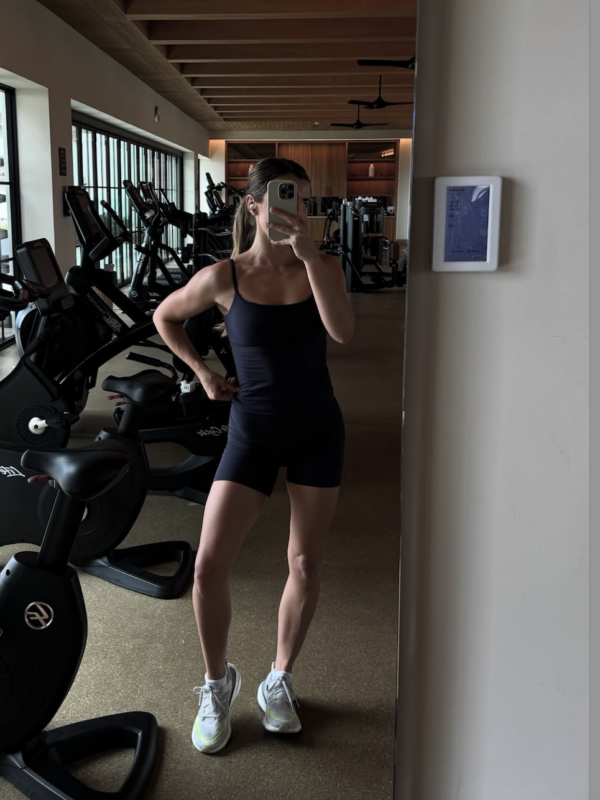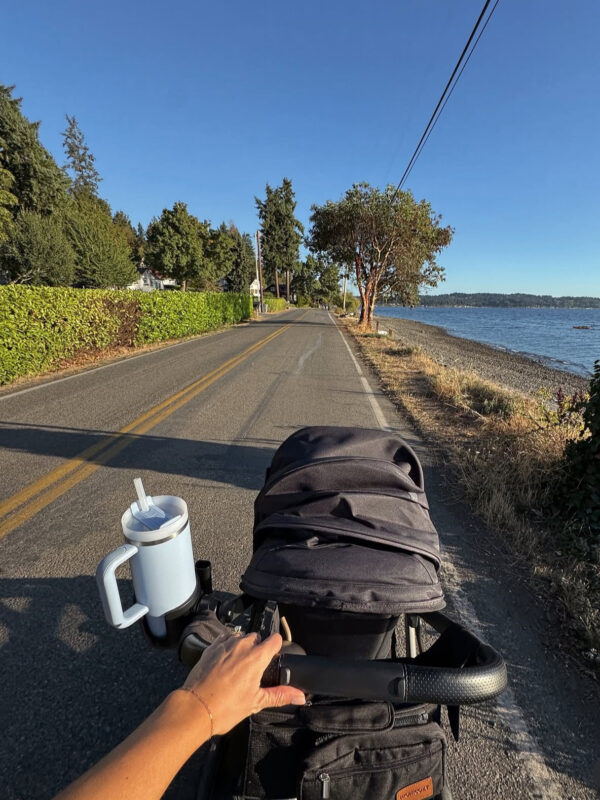
If you’re in your weight-lifting gym-girlie era, I probably don’t need to tell you about the magical combination of progressive-overload style strength training and incline walking. My Strength Collection includes 16 weeks of progressive-overload training and has had the most impact than any other program I’ve done. My current routine is 4 lifting days, 1 cardio + core day, and 2 ‘zone two’ cardio days. A common question I see floating around is if adding cardio before or after strength training is more effective. You can find out more about why I’d advise saving cardio for after your workout below.
Heart Rate Zones
Before we get into cardio specifics, let’s break down the heart rate zones that we move through during exercise. There are 5 zones based on effort exertion and heart rate: Zone 1 is easy movement (low to moderate exertion) all the way up to Zone 5, which is high intensity movement (very high exertion) and can only be sustained for minutes. Each zone utilizes a different energy store for fuel: carbs, fats, and protein.
Glycogen Stores
You’ve likely seen me recommend eating enough carbs in general, but specifically for using them to fuel a workout. Glycogen is the primary fuel for our muscles, and we store glycogen for quick use by eating carbohydrates. Our muscles feed off of glycogen during exertion, and being intentional in tapping into stored glycogen can have a big impact on reaching your goals.
Anytime your heart rate elevates to Zone 3 and above (moderate to very high intensity), your muscles will tap into your glycogen stores for efficient fuel. If you’re going for a run, or doing hiit – that is exactly where you want your energy to come from! But if you’re warming up for a strength workout, you’re depleting the energy stores you need to lift weights. You want to conserve your energy (stored glycogen!) for your heavier lifts.

Cardio Vs Warmup
There is a major difference between utilizing cardio to warm up for a strength session, and staying in an elevated heart rate zone for an extended period of time. I will always encourage 5-15 minutes of warming up before a workout. Your goal should be slowly building heat throughout the body by walking, jogging, stretching – not sprint intervals on the treadmill. Ideally, you want to stay between Zone 1-2 for your warmup.
The Secret Weapon: Zone 2 Cardio
A very common, and quite harmful, myth is that more cardio = more fat loss. The 5 heart rate zones demonstrate the difference between exertion that targets burning carbs, fats, and protein. Zone 2 cardio, moderate exertion and ~60% of max heart rate, will burn fat but not carbs or protein. Pairing strength training with zone 2 cardio will help gain lean muscle mass and burn fat without overexerting (aka, too much cardio). If you think it sounds too good to be true, just look at my GOOD // SWEAT Strength community. Hundreds of women who are lifting weights, incline walking, and have never looked and felt better.
Read more about my transformation here.














